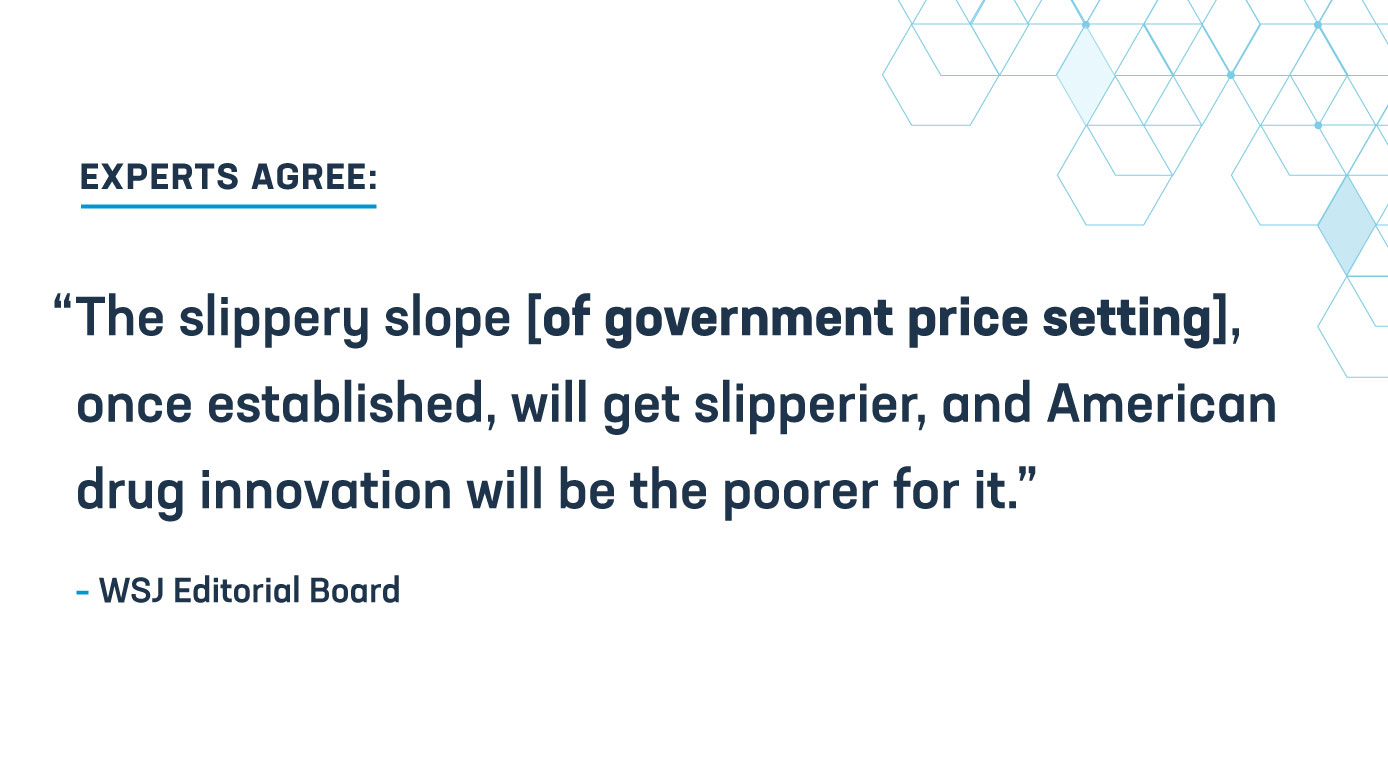Members of Congress continue to push a misguided drug pricing proposal under the guise of negotiation as part of the reconciliation package. This proposal is nothing short of government price setting and, if implemented, would require the government to dictate prices and choose winners and losers when it comes to which diseases are likely to see new treatments. Instead of addressing a broken insurance system, the most recent proposal doubles down on bad policies that will threaten patient access to medicines and future innovations. This is the final blog in a three-part series where we discuss the very real threats of the proposal.
The latest Senate reconciliation package undermines:
- Access to medicines
- Innovation for lifesaving medicines
- The health care system
The threat to our health care system.
- This policy does not hold insurers and pharmacy benefit managers (PBMs) accountable for shifting costs to patients. Under the proposal, insurers and PBMs can continue to shift the financial burden to patients in the form of higher cost sharing. Insurers and PBMs can also continue to impose utilization management, forcing patients to fail first or seek prior authorization before their medicine is covered. In the end, the bill does nothing to address the abusive practices of insurers and PBMs that directly drive up costs for patients. Congress isn’t fixing the problem with this bill.
- This policy does not do enough to help patients afford their medicines. While this proposal saves the federal government $300 billion, it provides just $25 billion to improve the Part D benefit. It leaves patient coinsurance in Part D at the same level as under current law, instead of improving affordability for patients with out-of-pocket costs below the Part D catastrophic phase, as previous versions of the bill did. It also blocks the rebate rule, meaning millions of patients will continue to pay cost sharing based on list prices, even when those prices exceed health plans’ actual costs. And while it does include an out-of-pocket cap in Part D, the $2,000 out-of-pocket cap will help less than 10% of beneficiaries in the program.

- This policy establishes a dangerous precedent and creates a slippery slope for further expansion of government set-prices for medicines. Despite claims to the contrary, this proposal is anything but “negotiation.” If a biopharmaceutical company does not agree to the price dictated by the government, they are forced to pay a massive excise tax of as much as 95% of a medicine’s gross sales or withdraw the medicine from the U.S. market. Put another way, a single $100 medicine could yield a $1900 tax liability per sale for the manufacturer. The cumulative impact of government intervention in the biopharmaceutical market will snowball over time, as more and more medicines become automatically subject to mandatory price setting each and every year beginning in 2026. In fact, by 2031 medicines accounting for 45% of Medicare drug spending could be impacted by “negotiation.” This is not a “modest proposal.” It disrupts our entire research and development system and the way Medicare pays for medicines.
Learn more about why government price setting is bad policy and better ways Congress could help patients access and afford their medicines. Take a look a back at our two previous blogs where we discussed how this policy would undermine access to medicines and innovation for future medicines.
Take action: Tell Congress to protect access to new medicines.




